Since early 2013, a variety of smartwatches have trickled into the market, raising the total number of available models to well of 10. The trend initially gained traction in the spring of 2012 after the Pebble’s extremely successful Kickstarter campaigned raised 10,266% of its initial goal. Catching whiff of a potentially huge and untapped market, electronic giants like Samsung, Motorola, Qualcomm and Apple, have all jumped on the bandwagon.
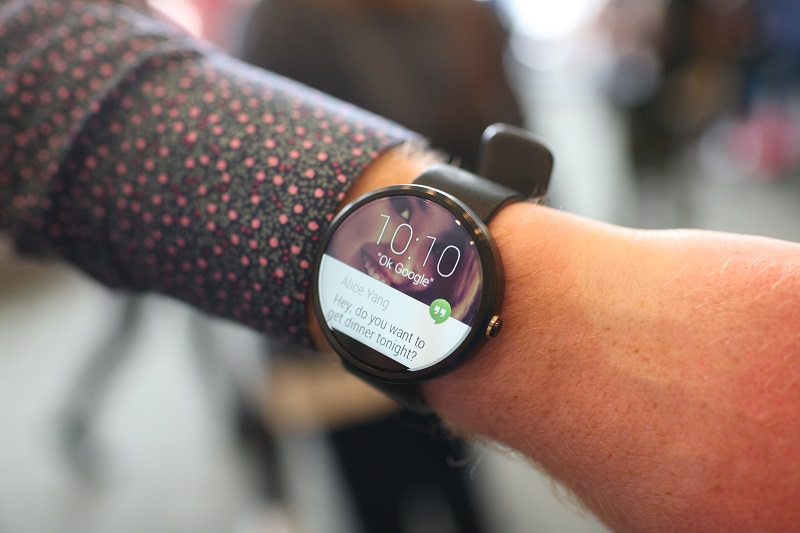
What exactly is a smartwatch?
Smartwatches are very similar to smartphones, performing much of the same fundamental functions: running mobile operating systems and mobile apps, acting as portable media players, displaying phone notifications and calendar appointments, tracking physical activity, with the addition of monitoring heart rate. Some devices even permit GPS navigation and voice calling. While the exact features vary by individual model, most smartwatches display time, temperature, and weather using customizable watch faces. Devices typically differ based on operating system, battery life, display, and aesthetics.
Samsung Gear 2
Samsung’s most recent flagship smartwatch is the Samsung Gear 2, a device that features a built-in microphone and speakers to allow the-future-come-today-like wrist calling. The voice capabilities take advantage of Samsung’s S Voice, a Siri-like function, to look up things like contacts and the weather. Gear 2 is powered by a dual-core 1 GHz Exynos3250 processor and uses 512 MB of ram. The watch also includes a 2 megapixel camera and a 320 x 320-pixel AMOLED display. Unfortunately, its color displays takes a huge toll on its 300-mAh battery, providing two to three days’ worth of life.
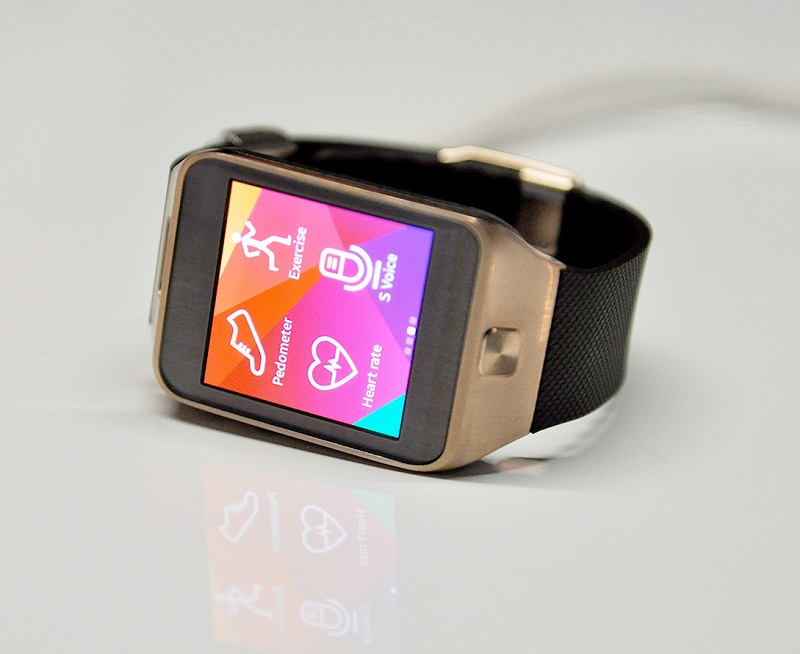 The Samsung Gear 2 is priced at approximately $180
The Samsung Gear 2 is priced at approximately $180
Moto 360
Motorola’s contribution to the smartwatch trend is the Moto 360, an extremely elegant device that doubles as a man’s wristwatch. The watch’s frame is circular and steel rimmed and can be attached to either a steel or leather strap. Unlike other smartwatches, Moto 360’s watch face encompasses most of the Gorilla Glass 3- covered screen, leaving very little border space. Couple this effect with a selection of watch faces that resemble standard wristwatches, and you get a very modest smartwatch that draws little to no attention until activated – for some, this may be a good thing.
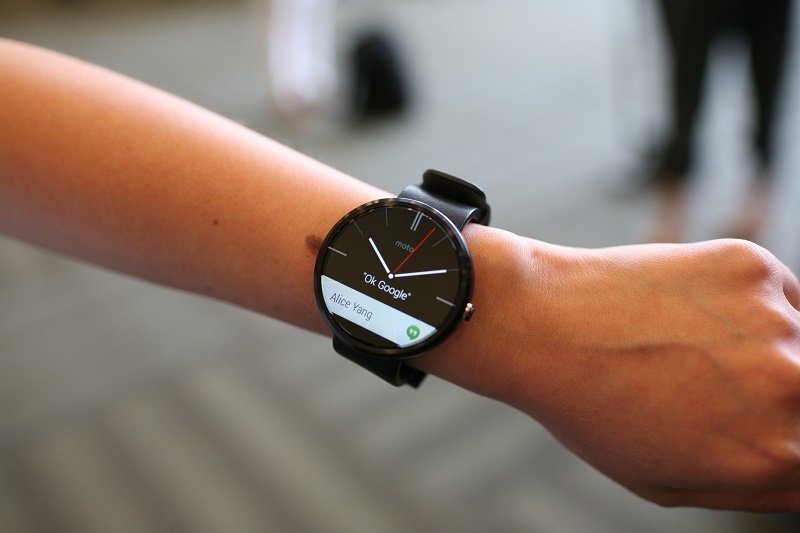 Moto 360 costs $250
Moto 360 costs $250
Motor 360’s LCD display features a 320 x 290 resolution, a single-core 1 GHz TI OMAP 3 processor that runs the Android Wear OS, and a 320-mAh battery. A built-in heart rate monitor provides an accurate heart rate reading, but is inconsistent at reading pulse. Given the watch’s “serious-business” appearance, one may prefer to use an exclusive fitness tracker, especially if the Moto 360 is fitted with a leather strap. The Moto 360’s biggest drawback is its short battery life; the 320-mAh battery struggles to provide even 24 hours of power if the fitness tracker is activated.
Pebble and Pebble Steel
The Pebble Steel is arguably the best overall smartwatch, featuring over 1,000 apps (including Yelp, Foursquare, Pandora, EPSN, and more), water proofing up to a depth of 165 feet, five to seven days of battery life courtesy of a rechargeable 130-mAh battery, and an elegant steel-frame and leather or metal band that camouflages the gadget to resemble a standard wristwatch.
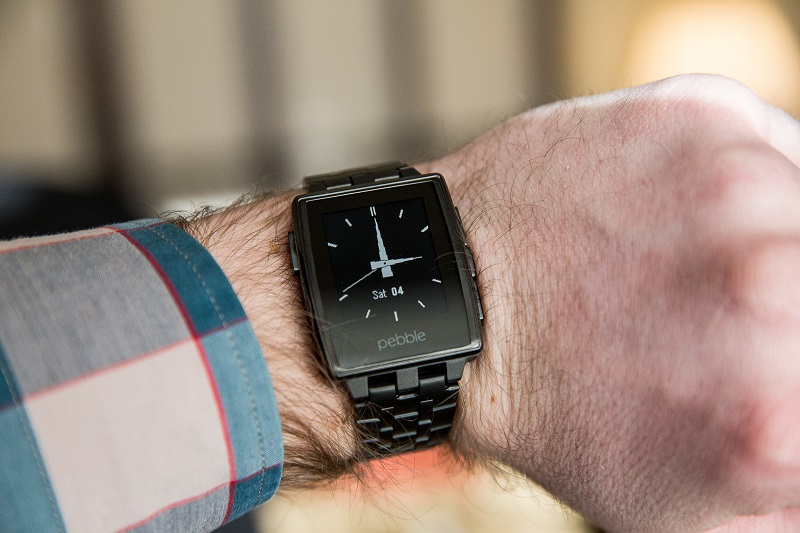
The Pebble Steel currently retails between $169.99 – 199.99. Those who are not interested in the premium steel frame may prefer the standard Pebble, which costs $135.99, offers the same functions, but looks like a “smart watch.” The standard Pebble’s frames comes a multiple colors. Regardless of frame-choice, both smartwatches use the same intuitive UI courtesy of Pebble’s proprietary OS. Also worth mentioning, the extended battery life is a result of forgoing a colored display in favor of E Ink.
Qualcomm Toq
I’m wearing a Qualcomm Toq smartwatch on my wrist this very moment. It’s my first smartwatch, let alone, my first watch in the last eight years. In the two week of wearing it, I’ve only needed to charge the battery once. The secret lies not in its 240-mAh battery, but in its low-power 200 MHz CM3 processor and Mirasol display technology, a middle ground between E ink and LCD.
The display is colored, but the colors are muted, unsaturated, and even slightly pixelated; think of a colored version of the Pebble’s display that’s readable under any light, never goes out, and includes a backlight for those times you find yourself in the dark. For what I need, muted colors are a fair compromise for lengthy battery life.

As one of the first smartwatches to grace the market in September 2013, the Toq is no jaw-dropper. And I don’t think Qualcomm ever intended it to be. The device’s shape blatantly screams wrist-strapped-gadget, but the dim display may deceive onlookers into thinking it’s an athletic digital watch. Either way, I’m not bothered by this; the concept of being informed of the time, the date, the temperature, and the weather by doing as little as turning my head is a huge convenience. Believe it or not, this key information is not yet accessible on smartwatches running Android Wear from one centralized location.
Toq’s QCOM OS includes a variety of watch faces that consolidates this information and even displays calendar appointments. Like all smartwatches, the Toq pairs with the user’s smartphone to display incoming text messages and phone calls. Users may even remotely initiate phone calls on their phone using the smartwatch.
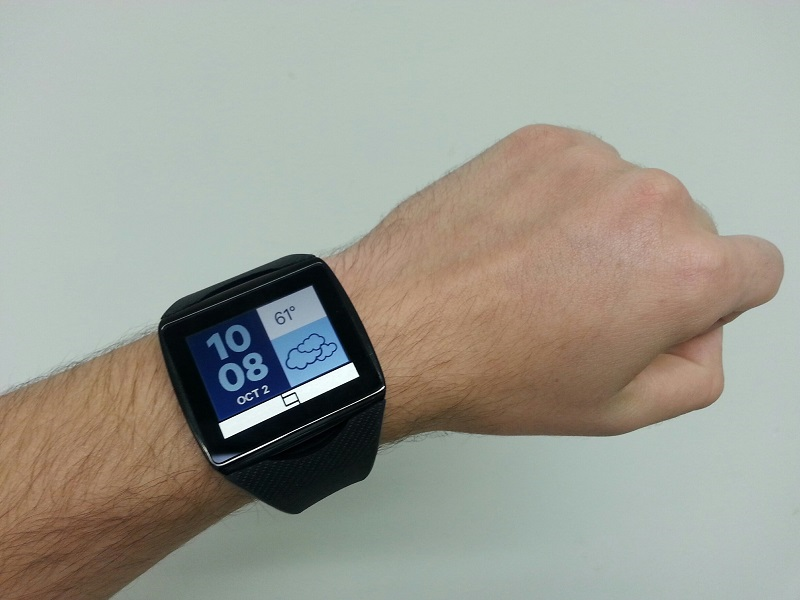
Other notable features such as the stock market reader, stopwatch, music controller, and fitness tracker are included in customizable applets. After the built-in accelerometer gathered data, Toq transmitted the information to its proprietary app on my smartphone, where it was compared by the hour and day, giving me a key insight into how I spend my day. This was one of my favorite features as it eliminates the need to wear a fitness tracker. Overall, the Toq is simple, yet effective at what it does for its cost range of $169.99-$229.99. My sole concern is there are no additional apps available outside of the proprietary apps, whereas the Pebble features over 1,000. Given the devices’ similar cost, this is something to considering when making a decision.
The Apple Watch
To everyone’s surprise, Apple’s entry into the smartwatch market did not consist of a device called the iWatch, but rather, the Apple Watch. Considered the most anticipated smartwatch, it‘s speculated that the Apple Watch will be the device that cements smartwatches as here to stay. To make this a reality, Apple has done something unique to other smartwatch developers: create multiple sizes of the same product. It’s evident by the sheer bulk of the majority of smartwatches on the market that industrial design favored men. Apple Watch will be available in multiple sizes for men and women, along with a more durable, sports version.
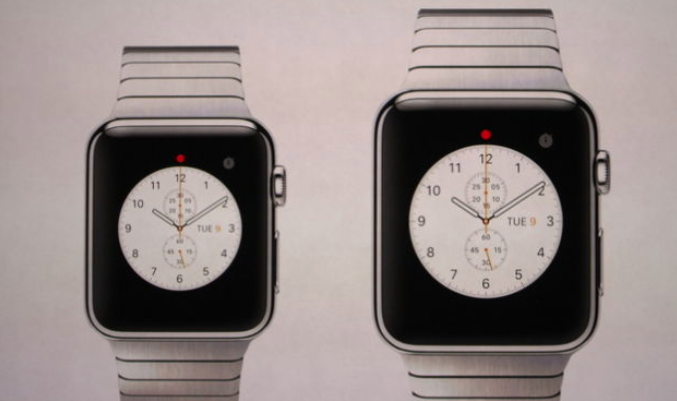
The Apple Watch’s specs are currently unknown – however – Apple CEO, Tim Cook, hinted that the device’s battery requires daily recharge. We also know that Apple Watch doesn’t require its own set of apps, just like Android Wear. Instead, it ferries over notifications from the iPhone. The expected launch date is Spring 2015, with a cost of $350. Did I mention that the watch requires an iPhone?
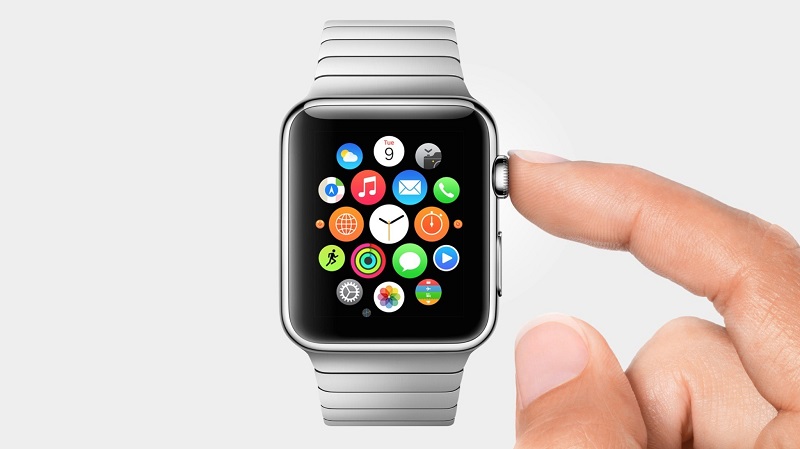
Advertisement
Learn more about Electronic Products Magazine





